Alert
Alerts
Type of practice
Walking
Easy
5h
Presentation
Description
Map
Steps
Points of interest
Cirkwi brief's
Ratings and reviews
See around
PR 27 "Noisy le Grand" loop – a circular walk

Credit : CDRP 93-CR
IGN cards

2414ET - MARNE-LA-VALLÉE FORÊT D'ARMAINVILLIERS FORÊTS DE FERRIÈRES ET DE CRÉCY
Editor : IGN
Collection : TOP 25 ET SÉRIE BLEUE
Scale : 1:25 000
13.90€

119 PARIS SENS PNR DU GÂTINAIS FRANÇAIS
Editor : IGN
Collection : TOP 100
Scale : 1:100 000
8.40€

118 PARIS CHARTRES PNR DE LA HAUTE VALLÉE DE CHEVREUSE
Editor : IGN
Collection : TOP 100
Scale : 1:100 000
8.40€
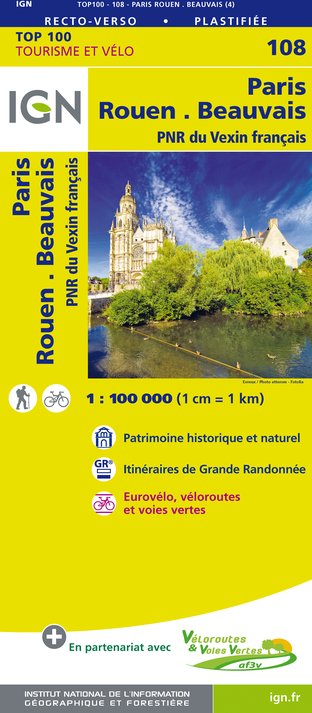
108 PARIS ROUEN BEAUVAIS PNR DU VEXIN FRANÇAIS
Editor : IGN
Collection : TOP 100
Scale : 1:100 000
8.40€
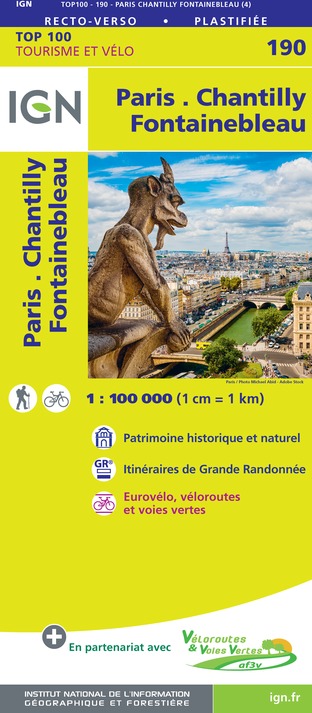
190 PARIS CHANTILLY FONTAINEBLEAU
Editor : IGN
Collection : TOP 100
Scale : 1:100 000
8.40€
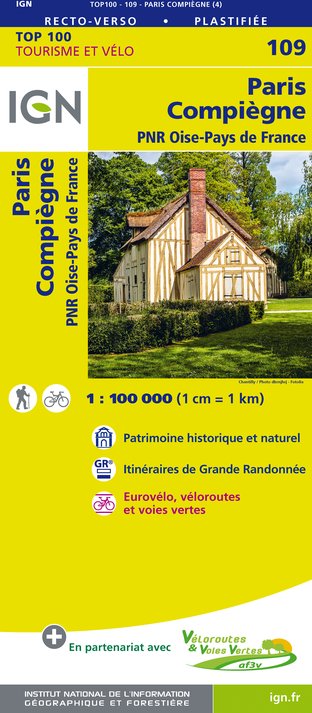
109 PARIS COMPIÈGNE PNR OISE-PAYS DE FRANCE
Editor : IGN
Collection : TOP 100
Scale : 1:100 000
8.40€

D75-95 ÎLE-DE-FRANCE OUEST
Editor : IGN
Collection : CARTES DÉPARTEMENTALES IGN
Scale : 1:150 000
5.90€

D77 SEINE-ET-MARNE
Editor : IGN
Collection : CARTES DÉPARTEMENTALES IGN
Scale : 1:150 000
5.90€
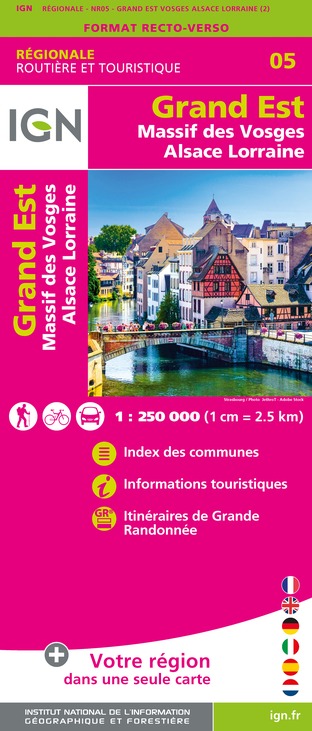
NR05 GRAND EST RECTO/VERSO MASSIF DES VOSGES ALSACE LORRAINE
Editor : IGN
Collection : CARTES RÉGIONALES IGN
Scale : 1:250 000
6.80€
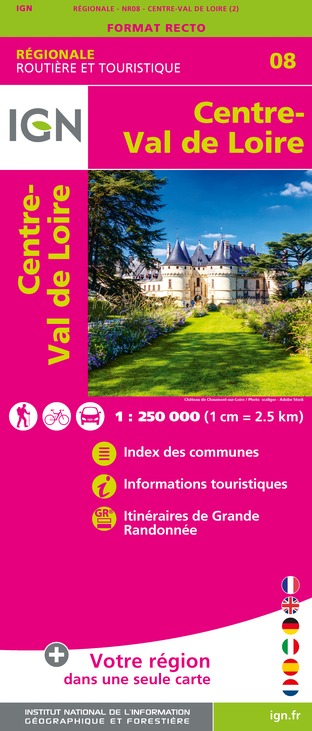
NR08 CENTRE-VAL DE LOIRE
Editor : IGN
Collection : CARTES RÉGIONALES IGN
Scale : 1:250 000
6.80€

NR04 - GRAND EST RECTO/VERSO ARDENNE CHAMPAGNE
Editor : IGN
Collection : CARTES RÉGIONALES IGN
Scale : 1:250 000
6.80€

NR01 HAUTS-DE-FRANCE
Editor : IGN
Collection : CARTES RÉGIONALES IGN
Scale : 1:250 000
6.80€

NR03 ÍLE DE FRANCE
Editor : IGN
Collection : CARTES RÉGIONALES IGN
Scale : 1:250 000
6.80€
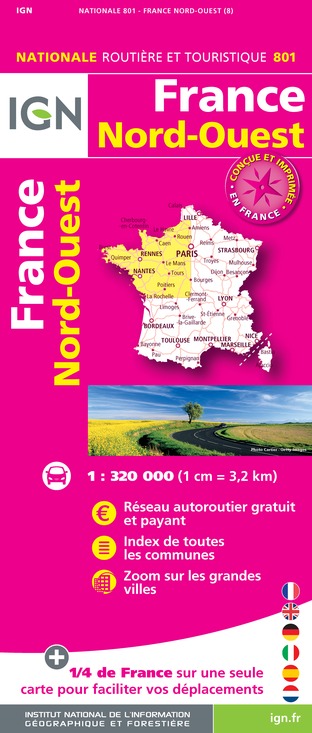
801 FRANCE NORD OUEST
Editor : IGN
Collection : CARTES NATIONALES IGN
Scale : 1:320 000
6.10€

EUROPE
Editor : IGN
Collection : DÉCOUVERTE DES PAYS DU MONDE IGN
Scale : 1:2 500 000
7.00€
Description
This urban rambling enable you to discover the city of Noisy-le-Grand, a new modern and functional city including an old center completely renovated in the purest tradition with fountains, streams, jets and water games, without forgetting the vineyard of closed Saint-Vincent and the Saint-Paul church Nations. Noisy Le Grand also includes many contemporary architectural creations such as the spaces of Abraxas, the Picasso bullring, the Michel Simon space.
Technical Information
Walking
Difficulty
Easy
Duration
5h
(1d)
Dist.
15 km
Type of practice
Walking
Easy
5h
Show more
Altimetric profile
Starting point
Promenade des Mares Dimanches
,
93160
Noisy-le-Grand
Lat : 48.8418Lng : 2.54971
Steps
Points of interest
Data author

proposed by
CDRP 93
1Ter Place des martyrs de la Résistance et de la Déportation 93110 Rosny-sous-Bois France
The Cirkwi brief
Explore Vibrant Noisy-Le-Grand: A Unique Architectural Journey
Created by FFRandonnee Seine-Saint-Denis, the itinerary invites you to immerse yourself in an extraordinary mix of modern and classical charm unique to Noisy-Le-Grand. This route not only showcases the fascinating interplay between historic traditions and contemporary designs but also guides you through lush green spaces, vigorous water jeux, and the tranquil Marne riverbanks. Key architectural marvels like the Abraxas Spaces serve as a testament to the city's innovative spirit while preserving the essence of communal and natural beauty. It's a circuit that offers an inspiring blend of sights, seamlessly connecting the old with the new.
Brief Technical Overview of the Path
This 15km journey through Noisy-Le-Grand boasts a moderate elevation range from 35m to a peak of 113m with a total positive altitude change of 215m. The route is characterized by its diverse terrain, making it suitable for walkers who enjoy a variety of landscapes. Its accessibility is enhanced by efficient public transportation options, catering to both locals and visitors alike. Structured by FFRandonnee Seine-Saint-Denis, it provides a comprehensive tour of the area's architectural and natural beauty, proving both manageable for the casual hiker and engaging for the more experienced.
Seasonal Tips for a Perfect Visit
As your local guide, I'd advise timing your excursion to align with the seasons for the most enjoyable experience. Spring and autumn present mild temperatures and vibrant colors, ideal for exploring Noisy-Le-Grand's outdoor attractions. Summer offers lush greenery but tends to be warmer, so carry water and sunscreen. In winter, the paths can be slippery, and visibility may decrease, requiring extra caution. Regardless of the season, comfortable footwear is essential for the 15km route, and remember to check local transport services for any schedule adjustments.
Heart of Modernity in Ancient Lands
Noisy-Le-Grand, nestled within the bustling Seine-Saint-Denis department, stands as a compelling fusion of historical allure and avant-garde architectural concepts. Its roots extend deep into France's storied past, with the Marne riverbanks and the vignettes of clos Saint-Vincent echoing times when agriculture framed daily life. Today, landmarks like the Espaces d'Abraxas bridge centuries, reflecting a community that respects its past while embracing a future of architectural innovation and urban development. This duality enriches every visitor's journey, offering a comprehensive insight into the region's evolving identity.
Weather Insights for Your Itinerary
The climate in Noisy-Le-Grand is typically temperate, with moderate to mild temperatures prevailing year-round. Winters can be chilly, with occasional rain, making layers and waterproof gear advisable for visits during this season. Spring and autumn showcase the region's natural beauty under the most favorable conditions—mild and generally dry, ideal for long walks. Summers can get warm, so early morning or late afternoon outings are recommended to avoid peak heat. For the best overall experience, planning your visit from late April to June or early September to October aligns with the most agreeable weather patterns.
Created by FFRandonnee Seine-Saint-Denis, the itinerary invites you to immerse yourself in an extraordinary mix of modern and classical charm unique to Noisy-Le-Grand. This route not only showcases the fascinating interplay between historic traditions and contemporary designs but also guides you through lush green spaces, vigorous water jeux, and the tranquil Marne riverbanks. Key architectural marvels like the Abraxas Spaces serve as a testament to the city's innovative spirit while preserving the essence of communal and natural beauty. It's a circuit that offers an inspiring blend of sights, seamlessly connecting the old with the new.
Brief Technical Overview of the Path
This 15km journey through Noisy-Le-Grand boasts a moderate elevation range from 35m to a peak of 113m with a total positive altitude change of 215m. The route is characterized by its diverse terrain, making it suitable for walkers who enjoy a variety of landscapes. Its accessibility is enhanced by efficient public transportation options, catering to both locals and visitors alike. Structured by FFRandonnee Seine-Saint-Denis, it provides a comprehensive tour of the area's architectural and natural beauty, proving both manageable for the casual hiker and engaging for the more experienced.
Seasonal Tips for a Perfect Visit
As your local guide, I'd advise timing your excursion to align with the seasons for the most enjoyable experience. Spring and autumn present mild temperatures and vibrant colors, ideal for exploring Noisy-Le-Grand's outdoor attractions. Summer offers lush greenery but tends to be warmer, so carry water and sunscreen. In winter, the paths can be slippery, and visibility may decrease, requiring extra caution. Regardless of the season, comfortable footwear is essential for the 15km route, and remember to check local transport services for any schedule adjustments.
Heart of Modernity in Ancient Lands
Noisy-Le-Grand, nestled within the bustling Seine-Saint-Denis department, stands as a compelling fusion of historical allure and avant-garde architectural concepts. Its roots extend deep into France's storied past, with the Marne riverbanks and the vignettes of clos Saint-Vincent echoing times when agriculture framed daily life. Today, landmarks like the Espaces d'Abraxas bridge centuries, reflecting a community that respects its past while embracing a future of architectural innovation and urban development. This duality enriches every visitor's journey, offering a comprehensive insight into the region's evolving identity.
Weather Insights for Your Itinerary
The climate in Noisy-Le-Grand is typically temperate, with moderate to mild temperatures prevailing year-round. Winters can be chilly, with occasional rain, making layers and waterproof gear advisable for visits during this season. Spring and autumn showcase the region's natural beauty under the most favorable conditions—mild and generally dry, ideal for long walks. Summers can get warm, so early morning or late afternoon outings are recommended to avoid peak heat. For the best overall experience, planning your visit from late April to June or early September to October aligns with the most agreeable weather patterns.
Automatically generated.
Ratings and reviews
To see around













